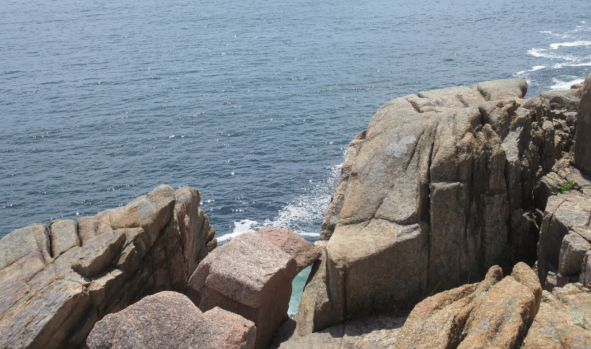We developed species distribution models to assess climate change refugia for the species listed below. We used occupancy data from iNaturalist, GBIF, the Environmental Protection Agency’s National Aquatic Resource Surveys, Nature’s Phenology Notebook and eBird. We included a range of relevant environmental variables in models for each species, including landcover, soil characteristics, canopy cover, and elevation. We used climate data derived by the UMass Designing Sustainable Landscapes (DSL) project and the Northeast Climate Adaptation Science Center (CASC) using data from the World Climate Research Programme's (WCRP's) Coupled Model Intercomparison Project phase 5 multi-model dataset, and the 800m resolution Parameter-elevation Relationships on Independent Slopes Model (PRISM) dataset developed by Oregon State University. The PRISM dataset incorporates many of the physiographic factors that can influence climate and subsequently lead to climate change refugia such as elevation, coastal proximity, aspect, topographic position, and orographic effects. We used six climate variables at 800m resolution representing 30-year normals averaged across 1981-2010 to develop species distribution models: mean annual temperature, minimum winter temperature, maximum summer temperature, growing degree days, total annual precipitation and growing season precipitation.
We used the species distribution models to predict current probability of occurrence across Maine for each species. We used the same models and current habitat values to predict occurrence in 2080 under RCP 4.5 and RCP 8.5, with climate data statistically downscaled to 30m resolution by bilinear interpolation. We masked out all developed sites and open water for all species except American Bittern and Mink Frog, using 30m resolution landcover data from the UMass Amherst DSL project. For American Bittern we only predicted on freshwater wetlands, and for Mink Frog we only predicted on open freshwater habitats, including wetlands. More detail on the methods can be found in the project report below.
There are some important assumptions and caveats to keep in mind when using these data. All predictions of probability of occupancy assume habitat conditions remain unchanged in the future. Furthermore, the models predict where a species could occur, not where a species will occur. These models do not capture the many other demographic, stochastic, and human influences that can also drive species’ occurrence patterns. Finally, these results are based on climate data that does not capture or represent the extreme events like storms and floods that are likely to also influence species under climate change.
For each species we include several different products, including the predicted probability of occupancy across Maine in 2010 (species_occ_2010), the predicted probability of occupancy across Maine in 2080 under RCP 4.5 (species_occ_80_45), the predicted probability of occupancy across Maine in 2080 under RCP 8.5 (species_occ_80_85), the percent change in probability of occupancy by 2080 for each cell across the landscape under RCP 4.5 (species_PCT_change_45), and under RCP 8.5 (species_PCT_change_85). Probability of occupancy ranges from 0-1.
DOI for Second Century Stewardship Refugia Products collection: https://doi.org/10.35482/ccranp.001.2019
2019
American Bittern (Botaurus lentiginosus), Jennifer Smetzer and Toni Lyn Morelli
Black Crowberry (Empetrum nigrum): crow_occ_2010, Jennifer Smetzer and Toni Lyn Morelli
Black Crowberry (Empetrum nigrum): crow_occ_80_45, Jennifer Smetzer and Toni Lyn Morelli
Black Crowberry (Empetrum nigrum): crow_occ_80_85, Jennifer Smetzer and Toni Lyn Morelli
Black Crowberry (Empetrum nigrum): crow_PCT_change_45, Jennifer Smetzer and Toni Lyn Morelli
Black Crowberry (Empetrum nigrum): crow_PCT_change_85, Jennifer Smetzer and Toni Lyn Morelli
Black-throated Green Warbler (Setophaga virens): btnw_occ_2010, Jennifer Smetzer and Toni Lyn Morelli
Black-throated Green Warbler (Setophaga virens): btnw_occ_80_45, Jennifer Smetzer and Toni Lyn Morelli
Black-throated Green Warbler (Setophaga virens): btnw_occ_80_85, Jennifer Smetzer and Toni Lyn Morelli
Black-throated Green Warbler (Setophaga virens): btnw_PCT_change_45, Jennifer Smetzer and Toni Lyn Morelli
Black-throated Green Warbler (Setophaga virens): btnw_PCT_change_85, Jennifer Smetzer and Toni Lyn Morelli
Chestnut-sided Warbler (Setophaga pensylvanica):cswa_occ_2010, Jennifer Smetzer and Toni Lyn Morelli
Chestnut-sided Warbler (Setophaga pensylvanica):cswa_occ_80_45, Jennifer Smetzer and Toni Lyn Morelli
Chestnut-sided Warbler (Setophaga pensylvanica):cswa_occ_80_85, Jennifer Smetzer and Toni Lyn Morelli
Chestnut-sided Warbler (Setophaga pensylvanica):cswa_PCT_change_45, Jennifer Smetzer and Toni Lyn Morelli
Chestnut-sided Warbler (Setophaga pensylvanica):cswa_PCT_change_85, Jennifer Smetzer and Toni Lyn Morelli
Incorporating Climate Change Refugia Into Climate Adaptation in the Acadia National Park Region, Jennifer Smetzer and Toni Lyn Morelli
Labrador Tea (Rhododendron groenlandicum): labtea_occ_2010, Jennifer Smetzer and Toni Lyn Morelli
Labrador Tea (Rhododendron groenlandicum): labtea_occ_80_45, Jennifer Smetzer and Toni Lyn Morelli
Labrador Tea (Rhododendron groenlandicum): labtea_occ_80_85, Jennifer Smetzer and Toni Lyn Morelli
Labrador Tea (Rhododendron groenlandicum): labtea_PCT_change_45, Jennifer Smetzer and Toni Lyn Morelli
Labrador Tea (Rhododendron groenlandicum): labtea_PCT_change_85, Jennifer Smetzer and Toni Lyn Morelli
Magnolia Warbler (Setophaga magnolia): mawa_occ_2010, Jennifer Smetzer and Toni Lyn Morelli
Magnolia Warbler (Setophaga magnolia): mawa_occ_80_45, Jennifer Smetzer and Toni Lyn Morelli
Magnolia Warbler (Setophaga magnolia): mawa_occ_80_85, Jennifer Smetzer and Toni Lyn Morelli
Magnolia Warbler (Setophaga magnolia): mawa_PCT_change_45, Jennifer Smetzer and Toni Lyn Morelli
Magnolia Warbler (Setophaga magnolia): mawa_PCT_change_85, Jennifer Smetzer and Toni Lyn Morelli
Mink Frog (Lithobates septentrionalis), Jennifer Smetzer and Toni Lyn Morelli
Northern Flying Squirrel (Glaucomys sabrinus): squirrel_occ_2010, Jennifer Smetzer and Toni Lyn Morelli
Northern Flying Squirrel (Glaucomys sabrinus): squirrel_occ_80_45, Jennifer Smetzer and Toni Lyn Morelli
Northern Flying Squirrel (Glaucomys sabrinus): squirrel_occ_80_85, Jennifer Smetzer and Toni Lyn Morelli
Northern Flying Squirrel (Glaucomys sabrinus): squirrel_PCT_change_45, Jennifer Smetzer and Toni Lyn Morelli
Northern Flying Squirrel (Glaucomys sabrinus): squirrel_PCT_change_85, Jennifer Smetzer and Toni Lyn Morelli
Olive-sided Flycatcher (Contopus cooperi): osfl_occ_2010, Jennifer Smetzer and Toni Lyn Morelli
Olive-sided Flycatcher (Contopus cooperi): osfl_occ_80_45, Jennifer Smetzer and Toni Lyn Morelli
Olive-sided Flycatcher (Contopus cooperi): osfl_occ_80_85, Jennifer Smetzer and Toni Lyn Morelli
Olive-sided Flycatcher (Contopus cooperi): PCT_change_45, Jennifer Smetzer and Toni Lyn Morelli
Olive-sided Flycatcher (Contopus cooperi): PCT_change_85, Jennifer Smetzer and Toni Lyn Morelli
Three-toothed Cinquefoil (Sibbaldiopsis tridentata): cinq_occ_2010, Jennifer Smetzer and Toni Lyn Morelli
Three-toothed Cinquefoil (Sibbaldiopsis tridentata): cinq_occ_80_45, Jennifer Smetzer and Toni Lyn Morelli
Three-toothed Cinquefoil (Sibbaldiopsis tridentata): cinq_occ_80_85, Jennifer Smetzer and Toni Lyn Morelli
Three-toothed Cinquefoil (Sibbaldiopsis tridentata): cinq_PCT_change_45, Jennifer Smetzer and Toni Lyn Morelli
Three-toothed Cinquefoil (Sibbaldiopsis tridentata): cinq_PCT_change_85, Jennifer Smetzer and Toni Lyn Morelli


